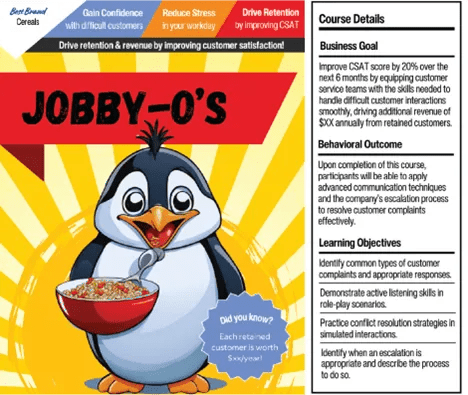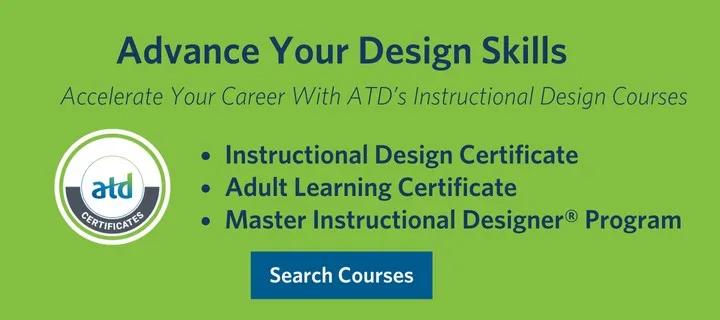ATD Blog
What Breakfast Cereal Got Right: Rethinking How We Introduce Learning to Our Audience
Fostering engagement and motivation from learners with a “front of the cereal box” approach.
Tue Feb 25 2025

Bookmark
With growing demands on learner attention, there’s a heightened focus across learning and development (L&D) to capture interest and establish relevance from the first few seconds of learning experiences. Despite this, many solutions still lead with learning objectives that, while rigorous and essential to L&D professionals, are perhaps less compelling to learners themselves.
It’s a tricky balance. Without captivating learners from the start, vital learning opportunities could be compromised. Yet, these objectives are necessary for designing solutions that align with identified business challenges.
That said, L&D needs learning objectives—but do our learners? Perhaps it’s time to reconsider how we articulate the WIIFM (what’s in it for me) for learners to build motivation that will fuel the desired behavior change. There’s an inherent tension, and it’s on L&D to make the first move.
Capture Attention Like a Cereal Box
Consider a cereal box: the front of the box is designed to attract consumers with colorful images and enticing descriptions of the cereal’s appeal. It engages consumers with clear, compelling information about the product and its benefits, using language that resonates with the target audience. In contrast, the side of the box contains a much smaller font with detailed information such as nutrition facts and ingredients.
Both sides of a cereal box are important, but for whom and for what purpose?
Historically, L&D has tended to present the side of the cereal box when delivering learning solutions, especially those that lead with overly technical learning objectives. In the social media era of learning, though, L&D is competing with a different set of learner expectations.
Fortunately, there’s a relatively simple adjustment—just flip around your cereal box and lead with the exciting front-of-the-box perspective to capture learners’ attention and interest right from the start. Don’t fret if you can’t envision your company’s version of a cheerful tiger touting sweet crunchy shapes—many of us have this information at our fingertips.
What Needs to Go on The Front of Our Box?
Start with the business impact you’re looking to drive and connect it to what learners can do after the training. Once you’ve identified what they can do, consider how that makes their world brighter. By understanding what learners gain by performing in a new or different way, it’s easier to reframe what they’re going to learn in terms that they actually care about. Finally, instead of presenting the same objectives you crafted to build the course, rewrite them to tell your audience what they are going to get from the training.
Let’s look at an example:

Represent the expected business impact as a goal: Improve customer satisfaction scores by 20 percent to retain customers and drive revenue growth.
Identify what learners need to be able to do: Apply advanced communication strategies with clients and employ the company’s escalation process to resolve complaints effectively.
Identify the WIIFM for your target audience: The ability to diffuse client complaints more effectively results in improved confidence, less stress, and improved performance metrics (for example, retention) for the customer service representatives.
Reframe your learning objectives: By the end of this course, you will:
Build confidence in managing challenging customer interactions by developing advanced conflict resolution skills.
Minimize workplace stress by identifying when and how to escalate calls.
Achieve your performance goals and earn incentives by enhancing customer satisfaction.
Wrap-Up
By fostering engagement and motivation from learners through a “front of the cereal box” approach, we can help them draw a clearer connection between business priorities, learning experiences, and performance expectations. This ensures that everyone involved understands what’s needed and is motivated to achieve the shared goals, leading to more effective and meaningful training outcomes.
If L&D can design more compelling solutions for the learner that are aligned to business objectives, championed by leaders, and measured by associated metrics, we all win. In fact, some might say it’s “Grrreat!”
More from ATD


